Stargazing has always had a way of pulling us in, but now, technology takes it even further.
Augmented reality is transforming astrology apps by turning passive horoscope reading into immersive, real-time sky experiences.
Imagine pointing your phone at the stars and watching constellations, planets, and even your birth chart appear right in the sky above you.
This isn’t science fiction, it’s happening now.
With the AR market projected to reach $88.4 billion by 2026, astrology apps are riding the trend to boost engagement, retention, and personalization.
In this blog, we’ll walk through exactly how AR in astrology apps is taking over from visual features to tech stack in a clear, decision-maker-friendly way.
Let’s get right into it:
Key Takeaways:
a. What’s the main benefit of AR in astrology apps?
It transforms static horoscopes into immersive, real-time sky interactions by letting users view planets and constellations directly through their camera.
b. How do astrology apps boost engagement with AR?
They use gamified features, visual birth charts, and sky-based learning tools to increase daily retention and user interaction.
c. Why is the tech stack important for AR astrology apps?
Choosing the right SDKs and using real-time astronomical data ensures accurate overlays, seamless performance, and a smooth user experience.
d. What are common challenges in building AR astrology apps?
Developers face issues like device compatibility, UI for first-time AR users, heavy battery usage, and long-term maintenance costs.
e. What does the future hold for AR astrology apps?
Expect AI-driven predictions, gesture control, shared AR sky sessions, and integrations with wearables like Apple Vision Pro.
What is AR in the Context of Astrology?
Augmented Reality (AR) lets your smartphone camera blend the real world with digital magic. Instead of just seeing reality, AR enhances it, think floating labels, 3D models, or cosmic animations layered right over your surroundings.
Now, bring that magic into astrology. In an AR-based astrology app, users can point their phone to the sky and instantly see planets, zodiac constellations, and celestial paths hovering in real-time.
No more guessing which star is which, an AR-powered astrology app turns your stargazing into an interactive experience.
It’s not just cool; it deepens user engagement. You’re not reading horoscopes, you’re literally seeing the cosmos unfold above you.
If you are seriously considering creating an astrology app for your business, then make sure to integrate Augmented reality in it to enhance the user experience.
Benefits of Integrating AR in Astrology Apps
Adding AR in astrology apps doesn’t just make them prettier, it transforms how users explore the cosmos.
Instead of swiping through static charts or reading dense astro-jargon, people can interact with the sky in real-time, right from their phone. It's immersive, educational, and flat-out fun.
Here’s how AR-based astrology apps bring the stars to life:
A] Enhanced Visual Learning
Users can instantly spot zodiac constellations, planetary paths, and lunar phases using AR, which enhances visual learning—one of the standout astrology app features in today’s digital landscape.
This turns astrology into an interactive classroom, no textbooks required. Augmented Reality in astrology apps makes complex concepts easy to grasp.
B] Real-Time Celestial Interaction
Imagine seeing Venus or Mars highlighted above your head, live. With AR-powered astrology apps, users don’t just learn, they experience. It's the difference between reading about constellations and walking through them.
C] Increased Engagement & Retention
The wow factor of AR in astrology apps keeps users coming back. People are far more likely to open an app daily when it offers a unique, sky-mapped journey tied to their zodiac.
D] Competitive Differentiation
In a sea of similar apps, AR-based astrology apps stand out. Offering real-time sky overlays adds serious value and positions your app as next-gen, not just another horoscope generator.
With this being said, now time to look at some tips to integrate augmented reality in astrology apps.
Tips to Integrate Augmented Reality in Astrology Apps
Ready to turn stargazing into a full-blown interactive experience?
Let’s walk through some practical tips to bring AR-powered astrology apps to life and make your users feel like they’re holding the universe in their palms.
1. Choose the Right AR SDK to Match Your Astrology Use Case
Not all AR tools are created equal.
When building AR-powered astrology apps, select an SDK that supports geolocation, sky mapping, and 3D object rendering, ideally one that fits within your broader astrology tech stack.
This ensures the celestial overlays align perfectly with real-world coordinates.
To truly show how AR is transforming astrology apps, you need tools that offer accuracy and minimal latency under the stars.
Test how well your SDK handles outdoor environments, as it’s key for user satisfaction. And, if you are ready to take steps forward then work with a team with strong hold on AR/VR development services and understands astrology apps inside out.
2. Map AR Content to Real-Time Astronomical Data
For your AR-based astrology app to feel magical yet accurate, sync it with live astronomical data through reliable astrology API integration to ensure accuracy in planetary positions
This allows your app to show where planets, constellations, and stars actually are in real time.
Users don’t just get visual overlays; they interact with the actual sky above them.
This is how augmented reality in astrology apps becomes more than just a gimmick. It’s immersive education blended with entertainment.
3. Use Gamified Learning to Make Celestial Navigation Fun
People love to explore when there’s a sense of reward.
Add small AR-driven quests, like "Find Jupiter in your sky tonight" or "Spot the Orion constellation to unlock your horoscope insight”, which taps into the growing trend of gamification in astrology apps.
This adds a playful edge to your AR-based astrology app.
Gamification paired with AR in astrology apps doesn’t just educate, it hooks users in. Your app will stand out by mixing utility and joy.
4. Optimize for Both Day and Night Sky Modes
A common mistake? Only designing for the night sky. But astrology lovers are curious 24/7.
So, build your AR-powered astrology app with both sunlit and dark-sky modes. Use filters to highlight invisible celestial bodies during the day.
Show overlays like moon phases or retrograde paths. This proves how augmented reality is revolutionizing astrology apps, not just for stargazers, but for everyday users too.
5. Keep the UI Simple, Let the Stars Shine
Too much visual noise can kill the magic. Don’t overcrowd the interface with excessive zodiac signs, widgets, or overlays.
Let the AR sky dominate the screen. Use gesture-based navigation for constellations and planet paths.
When AR in astrology apps is clean and intuitive, users feel like they’re in control of a cosmic compass. The goal is elegance, not overload.
With the tips being clear, we are about to discuss the use cases of Augmented reality in astrology apps.
Real-World Use Cases of AR in Astrology Apps
Augmented Reality isn’t just a cool add-on; it’s becoming a core feature in next-gen astrology apps.
From real-time stargazing to interactive birth charts, AR in astrology apps creates personalized, visual, and immersive experiences that text-based horoscopes never could.
AR-powered astrology apps don’t just tell users about the stars; they let them see and interact with them. Let’s explore how this tech is turning skywatching into a daily digital ritual.
► Real-Time Star and Planet Mapping
One of the most exciting use cases of augmented reality in astrology apps is letting users point their phone toward the sky and instantly see planets, stars, and constellations labelled on screen.
This feature brings stargazing to life by turning the entire sky into an interactive experience.
It's a core way AR is transforming astrology apps, from passive reading to immersive learning in real time.
► Personalized Birth Chart Overlays
AR-powered astrology apps can display users' birth charts as floating visualizations that align with the current sky view.
Instead of staring at a 2D wheel, users see planetary positions hovering around them in AR.
This personalization adds emotional depth and increases retention.
It’s one of the most compelling examples of how augmented reality is revolutionizing astrology apps with meaningful visuals.
► Planet Retrograde Tracker in AR
Tracking Mercury in retrograde? AR makes it visually stunning.
Users can activate AR and see animated paths of planets in motion, clearly showing which ones are in retrograde and how long they’ll stay there.
This visual storytelling builds trust and keeps users coming back daily.
It’s a smart way AR in astrology apps makes complex planetary movements easier to grasp for the average user.
► Daily Horoscope Visualizations
Forget walls of horoscope text, now imagine waking up and opening your app to an AR-powered daily forecast.
Through your camera, Mars may glow red beside your coffee mug, or Saturn might appear with slow rings turning near your desk. Moments like these show how astrology apps make money by creating engaging daily rituals that users come back for.
This visual interpretation boosts both excitement and comprehension.
AR-based astrology apps like this turn everyday routines into mystical interactions.
► Interactive Astrology Learning Modules
Learning astrology can feel overwhelming, but AR simplifies that.
Users can scan their surroundings and activate lessons on zodiac signs, planetary rulership, houses, and more, each appearing as animated AR elements.
They can walk through a 3D zodiac wheel or interact with planets to learn meanings.
This use of augmented reality in astrology apps makes self-study fun, memorable, and far more engaging than static PDFs.
► Astrological Event Alerts with Live Visuals
When a planetary conjunction or eclipse occurs, your app doesn’t just send a text alert; it invites the user to see it.
Through AR, users are guided to point their device at the correct angle to witness the celestial event live.
This turns users into participants instead of readers.
It’s how astrology apps with AR bring cosmic events to life in a way that push notifications simply can’t.
► AR Meditation with Planetary Alignments
Combine AR with astrology and meditation? You’ve got a wellness winner.
Users can sit with their phone camera open, and AR visuals place planets above their head aligned with zodiac-based affirmations.
Moon phases and retrogrades can enhance themed meditations.
This spiritual blend is a major differentiator, especially for apps focusing on mindfulness, showing how AR-powered astrology apps offer both utility and serenity.
► Social Astrology Experiences in AR
AR isn’t just solo, it’s social.
Two users can open their astrology app with AR and align their star charts side by side.
Apps can offer compatibility visuals, joint planetary placements, or even shared horoscope animations, especially since astrology app market statistics show increased demand for social-first features.
This encourages app sharing and deeper user bonding.
It’s one of the most creative ways AR is transforming astrology apps into shared, social experiences, not just personal tools.
Now that we’ve seen where AR fits in, let’s talk features, the actual AR-powered tools that can turn a basic horoscope app into a celestial experience.
Key AR Features That Make Astrology Apps Stand Out
AR in astrology apps isn’t just about sky visuals. It’s about turning static charts and zodiac data into interactive journeys.
These AR-powered astrology apps bring constellations to life, make sky mapping feel personal, and help users explore the universe right from their phones.
Here are the AR features that are redefining what modern astrology apps can do:
|
Feature |
What It Does |
Why It’s Cool |
|
Live Sky Mapping |
Uses AR to project real-time constellations over the phone’s camera view |
Makes users feel like they’re holding the night sky in their hands |
|
AR Zodiac Overlays |
Projects the zodiac signs onto the stars user's point to |
Links astrology with actual astronomy in a fun, immersive way |
|
Interactive Birth Chart Visualization |
Turns static natal charts into 3D AR models you can explore |
Helps beginners and enthusiasts understand chart layers with ease |
|
AR Horoscope Notifications |
Delivers horoscope updates via interactive AR pop-ups |
Boosts engagement with fun, visual messages |
|
Planetary Alignment Viewer |
Shows upcoming planetary events in AR with motion tracking |
Gives a real-time, spatial sense of planetary motion and alignment |
|
Astro-Themed Camera Filters |
Let users add AR zodiac effects to selfies or sky photos |
Encourages social sharing and app virality |
|
Guided Stargazing AR Tours |
Offers step-by-step constellation finding using AR overlays |
Perfect for users who want a guided skywalk experience |
|
Custom Celestial Events Alerts |
Alerts users about key dates based on their charts, shown in AR |
Blends personalization with an immersive visual layer |
The foundation for the features has been laid. Let’s get to know different challenges one might face while implementing AR in astrology apps.
Challenges in Building AR Astrology Apps
Let’s be honest: AR in astrology apps sounds magical, but building them? Not so simple.
From syncing real-time sky data to managing AR overlays without lag, the road from an astrology app idea to a fully functional AR-powered astrology app is packed with technical and strategic hurdles.
Here are some of the most common challenges developers and product owners face:
► Accurate Sky Mapping and AR Calibration
Getting AR overlays to align with real-world constellations is harder than it sounds.
You’re dealing with GPS, gyroscopes, accelerometers, time zones, and if any of those are off, your app will show the wrong stars. For AR-based astrology apps, this creates trust issues fast.
► Real-Time Data Syncing
AR features require up-to-the-minute astronomical data.
If your app lags behind or pulls outdated planetary positions, the experience collapses. That’s a major pitfall in augmented reality in astrology apps, where real-time alignment is key.
► Device Compatibility
Not all phones are AR-ready, making compatibility one of the common challenges in astrology app development.
Many AR-powered astrology apps suffer from limited adoption simply because a portion of users have older phones that don’t support ARKit or ARCore frameworks.
This limits your reach and complicates development timelines.
► Performance and Battery Drain
AR consumes heavy resources, including camera, GPS, sensors, and real-time rendering, all at once.
If your app drains battery or overheats devices, users won’t stick around. That’s one of the big challenges teams face when trying to balance visuals with usability.
► UI/UX for First-Time Users
AR is still new to many users.
Designing intuitive onboarding and tutorials that teach people how augmented reality is revolutionizing astrology apps without overwhelming them is tricky, especially when considering astrology app design best practices
► High Development Cost and Maintenance
Adding AR features means higher costs for design, development, and post-launch tuning.
Maintaining AR updates and OS compatibility becomes a long-term expense, which makes astrology app maintenance a critical part of post-launch planning.
So, turning an astrology app idea into a scalable AR product means careful planning and budgeting.
► Privacy and Data Permissions
Using AR means asking users for camera, location, and motion data access, which directly ties into growing concerns around astrology app security.
Get this wrong, and your app could be flagged for privacy concerns, especially in regulated regions. That’s another layer of complexity in developing AR astrology apps.
Talked enough about challenges, let’s take a look at future trends shaping the growth of AR technology in astrology apps.
What’s Next for AR in Astrology Apps? Future Trends to Watch
If you think AR in astrology apps has already peaked, think again.
We’re just scratching the surface of how immersive and intelligent these experiences can become. As user expectations grow and AR tech advances, the next generation of AR-powered astrology apps is going to look and feel completely different.
Let’s explore what’s coming down the line:
1. AI + AR: Smarter Sky Guides
The future isn’t just about visuals, it’s about intelligence.
By combining AI in astrology apps with augmented reality, users won’t just see constellations through their camera; they’ll get real-time astrological interpretations, compatibility predictions, and tailored guidance directly overlayed on the night sky.
It’s like having a virtual astrologer and star map rolled into one. This kind of AI-AR blend makes AR-powered astrology apps far more than visual tools; they become intuitive, predictive cosmic assistants.
This blend is exactly where AI development services play a crucial role in bringing predictive and personalized features to life.
2. Gesture-Based Navigation
Touchless controls are coming.
Future AR-based astrology apps will let users point to stars, swipe constellations, and tap planets mid-air, all using hand gestures and device cameras.
Think Minority Report, but for your birth chart.
3. Social AR Star-Viewing
Why stargaze alone?
Expect to see AR-powered astrology apps introduce shared sky sessions, where you and a friend can look at the same celestial event together, even from different cities.
Great for astrologers, even better for long-distance astrology lovers.
4. Mixed Reality Integration
As AR glasses like Apple Vision Pro roll out, we’ll move beyond phones.
Astrology apps with AR will become hands-free, always-on, and layered over your daily life. You’ll glance up, and boom, Venus in Leo, right in your living room.
5. AR-Enhanced Tarot and Rituals
Rituals and tarot readings are a huge part of astrology culture.
Now imagine scanning your deck or altar, and seeing planetary influences visualized in real time, a direction top astrology apps are starting to explore.
That’s how augmented reality is revolutionizing astrology apps beyond just sky maps.
As you know, who doesn’t wants to be in trend, so to be future-proof, you need to take note of top mobile app development companies in the USA, and that’s what our next section through light on.
How JPLoft Can Help You Integrate AR-Based Astrology Apps?
Do you want to integrate AR-powered Astrology apps? JPLoft is here to help.
As a leading astrology app development company, we help you integrate AR features like interactive sky maps, real-time star alignments, and planet overlays, making horoscopes a visual experience, not just text.
Imagine users pointing their phone at the sky to see their zodiac constellation come alive.
If you are building for Gen Z stargazers or serious astrologers, we design AR-powered experiences that are accurate, engaging and unforgettable.
With us, astrology meets immersive tech, turning predictions into personalized, magical journeys. Ready to launch your AR cosmos?
Conclusion
As we've explored, how AR is revolutionizing astrology apps isn’t just a buzz phrase — it’s the future.
By transforming static charts into immersive experiences, AR bridges ancient astrological wisdom with real-time interaction.
From visualizing birth charts in the sky to turning daily horoscopes into interactive experiences, AR brings a new level of personalization, engagement, and wonder to astrology apps.
For brands and founders, this isn’t just about adding flash — it’s about building a deeper emotional connection and loyalty.
As user expectations evolve, the question isn’t if you should add AR… It’s how soon?
FAQs
Augmented Reality (AR) in astrology apps enhances the user experience by overlaying constellations, planets, zodiac signs, and horoscopes on the real-time sky using a smartphone camera. It blends the physical and digital worlds to create immersive celestial experiences.
Yes, when built with accurate sky mapping APIs and real-time astronomical data, AR astrology apps can show users the precise position of planets, constellations, and events like retrogrades directly over the actual sky view.
Most modern smartphones (Android and iOS) that support ARKit or ARCore can run AR-powered astrology apps. However, older devices may have limited support or performance issues.
Costs vary based on complexity, AR SDKs used, real-time data integration, and custom features like gamification or social AR. On average, a high-quality AR astrology app may range from $30,000 to $150,000 or more.
Key features include real-time sky mapping, interactive birth charts, planetary alignment viewers, gamified constellation quests, AR notifications, and even shared sky experiences with friends, all making the app engaging and shareable.





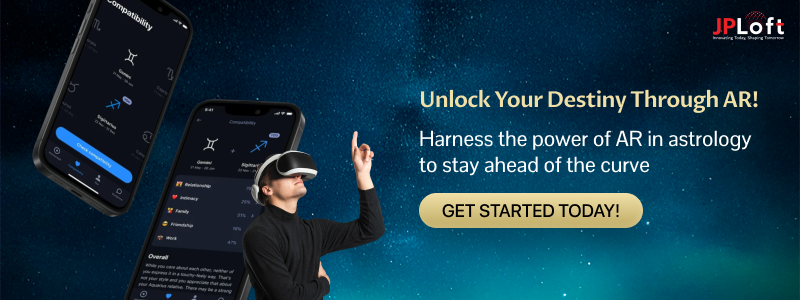
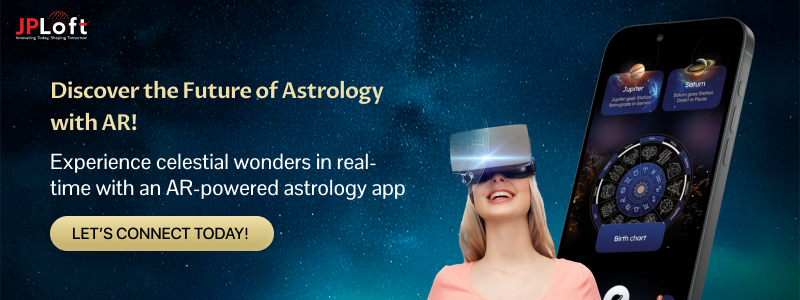

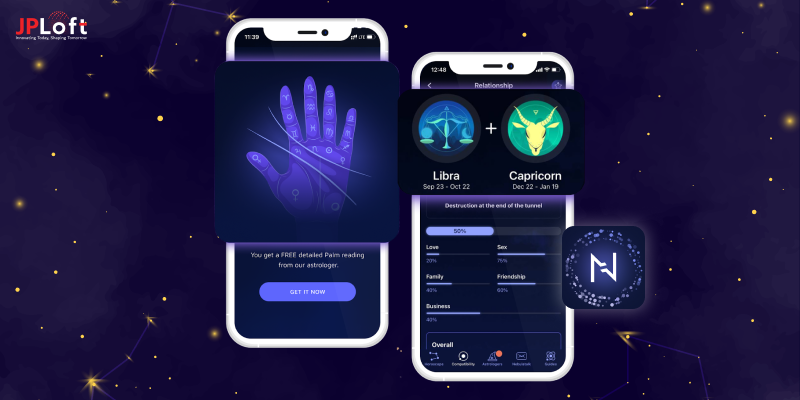
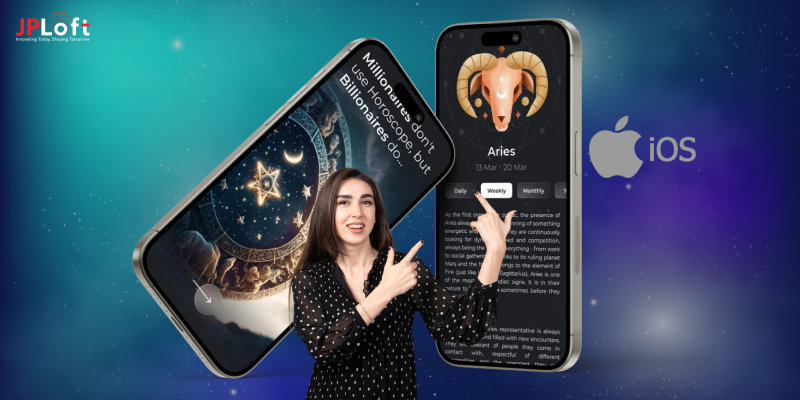
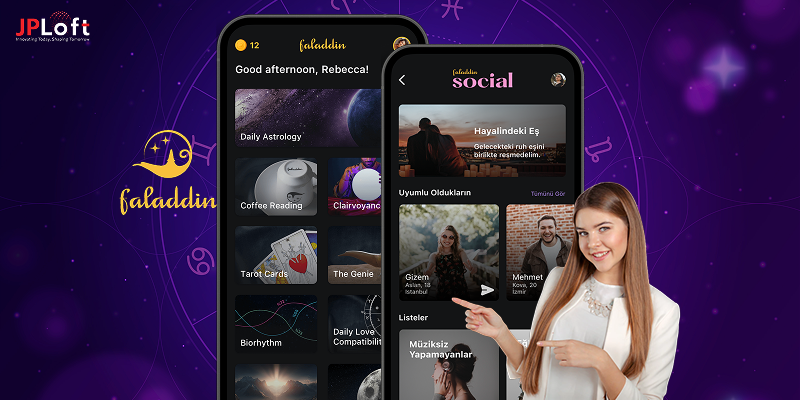


Share this blog